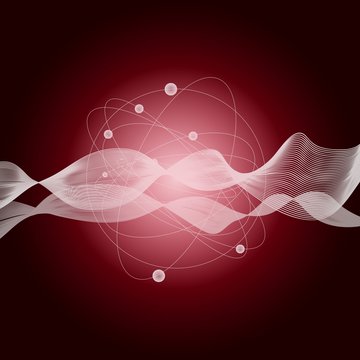Single Photons are Paving the Way for the Future
Quantum Computing
Many consider quantum computing the gateway to a new world of fast-thinking, intelligent computers. While classic computers process information as bits, quantum computing uses so called qubits. As a comparison, the classic bit may be represented by a coin that can only show heads or tails, whereas qubits are more like a coin that spins while it is being tossed.
In addition to the equal probability of ending up on either side, it also has other properties such as the spinning speed, the direction it spins, the angle of the spinning axis, and so forth. All these properties may be used to carry data – but only for as long as the coin is spinning. As soon as it lands on the ground it will once again end up with one side up, and the exciting qubit turns into a boring old bit.1
Secure Data Transfer
Beyond Borders


While IBM, Google, and their respective research networks are working on augmenting quantum computing, others have set their eyes on another aspect of the quantum future – namely how it may affect cybersecurity and data encoding.
Quantum computing poses a potential threat as it is capable of rapidly decoding existing encryption methods. One readily available solution is quantum key distribution (QKD).
The first theoretical principles of quantum encryption have been established as early as the 1980s. Most commonly, single photons are randomly put into distinct states of polarization that are transmitted from an information source (Alice) to a recipient (Bob), where they are retransferred into digital information.2
One of the most secure forms of establishing a trusted connection between Alice and Bob is the use of entanglement. Roughly speaking, there is a magical band between a pair of photons created as twins, which causes one of them to behave exactly like the other – even if they are miles apart. Scientists call this “spooky action at a distance”. With one entangled photon transmitted to Bob, while the other returns to Alice, both the data and code information can be transmitted at the same time.
Long-distance Communication CHallenges
Beyond Borders
Using modern fiber technology, QKD may be applied today, but only on a metropolitan level. Due to the optical attenuation of fibers, the signals can only be transmitted for a few hundred kilometers before they are degraded into indistinguishable blabber. In legacy technologies, optical or electronic repeaters are used to overcome these obstacles; however, on a quantum level these technologies are not likely to be available within the next few decades.
Unlike with radio transmissions, the free-air transmission of optical data relies on the so-called “line of sight”, which is the uninterrupted line between the sender and the recipient. Therefore, scientists are once again setting their minds beyond the confines of our planet. The attenuation of the atmosphere is far lower than that of an optical fiber. This means that effective communication is possible over significantly longer distances, given suitable sensitive single photon detectors. An entangled quantum code generated by a satellite in Earth’s orbit could be transferred to both Alice and Bob, as long as they are both within reach of the satellite.
In 2017, the Micius satellite of the Chinese Academy of Science was successfully used to transfer a traditional quantum code from China to Vienna, Austria. At the National University of Singapore, scientists are currently working on an entangled quantum encryption device that will fit into a small so-called nano-satellite cube of 11.35 cm × 10 cm × 10 cm. The aptly named SpooQySat, in operation since June 17, 2019, currently serves as a live demonstration of an entangled photon source in space.
Down on Earth, the detectors on Bob’s side have to be able to filter out a single encoded photon from all the surrounding background noise. Usually, scientists employ single photon avalanche diodes that absorb incoming photons and transfer them into electrical signals. Their quality is defined by their quantum efficiency and the ability to block out the background noise.
1www.sciencealert.com/quantum-computers
2en.wikipedia.org/wiki/Quantum_key_distribution

Click here
Fundamental Research Supported by Highly Sensitive Measurement Tools
Beyond Borders
In quantum information processing, many experiments are conducted in a wavelength range of around 810 nm, which is where silicon avalanche photodiodes (APDs) are most efficient. Under the brand name COUNT® NIR, LASER COMPONENTS offers a plug-and-play module with a notable detection efficiency rate of 50% at 810 nm – almost 80% at 700 nm – and extremely low dark count rates of < 50 cps.
The device is based on a single-photon avalanche photodiode (SPAP) designed in house that operates in Geiger mode to detect extremely weak light signals.
All in one, COUNT® NIR offers researchers a versatile set of features that combines high photon detection efficiency, a high dynamic range, and ease of use for the most demanding photon counting applications.
LASER COMPONENTS UK - Your competent partner for optical and optoelectronic components in the United Kingdom.
Welcome to LASER COMPONENTS UK Ltd., your expert for photonics components. Each product in our wide range of detectors, laser diodes, laser modules, optics, fiber optics, and more is worth every Pound (£/GBP). Our customized solutions cover all conceivable areas of application: from sensor technology to medical technology. You can reach us here:
Goldlay House, 114 Parkway
Chelmsford Essex CM2 7PR
United Kingdom
Phone: +44 1245 491 499
Email: info(at)




